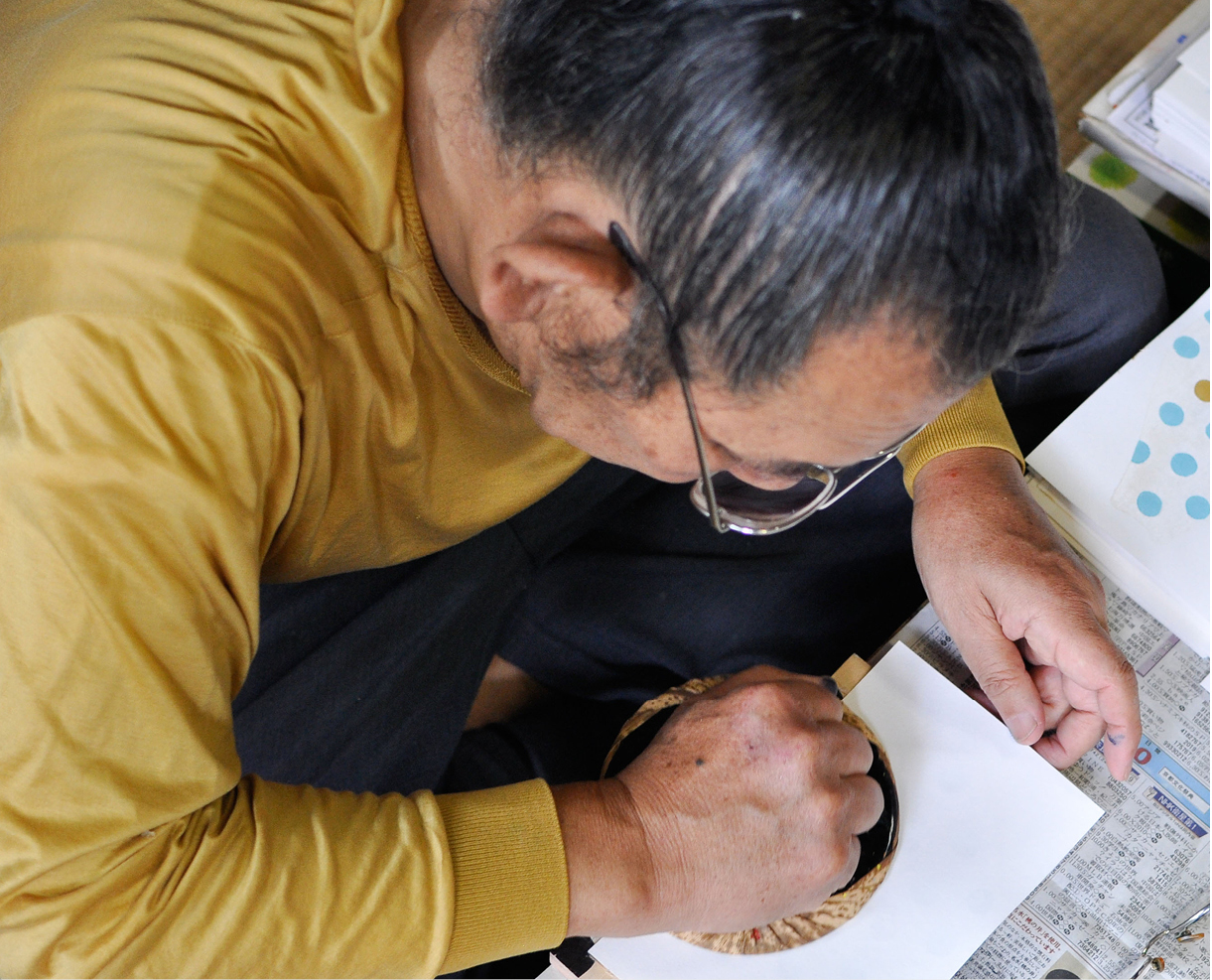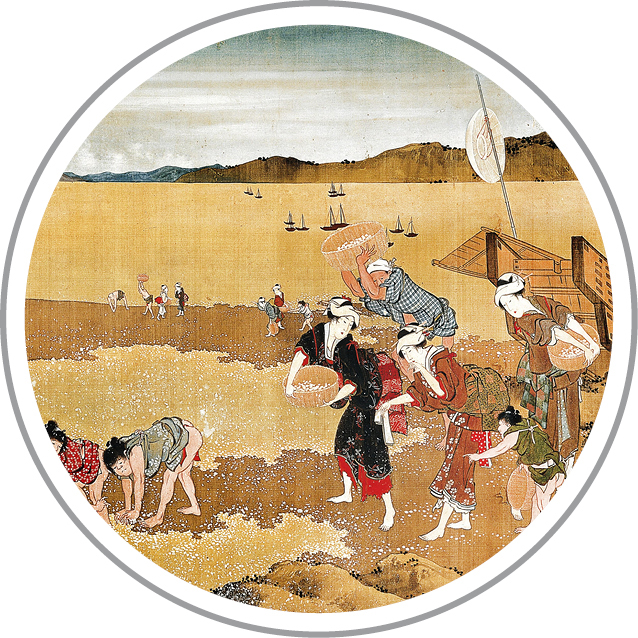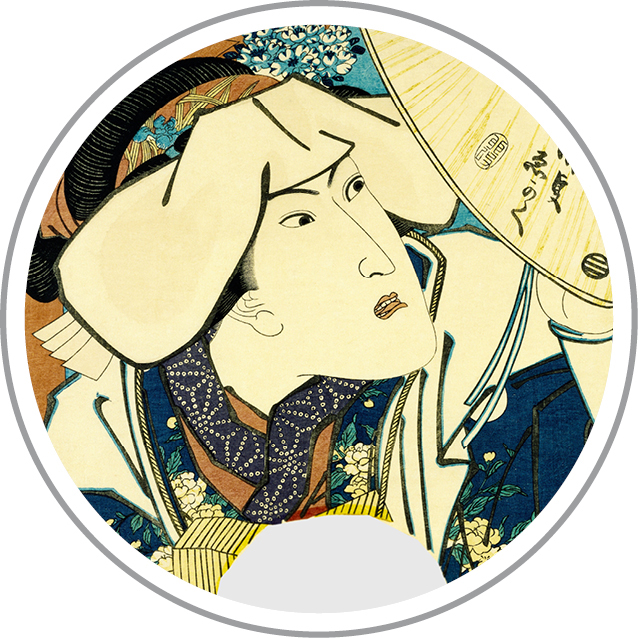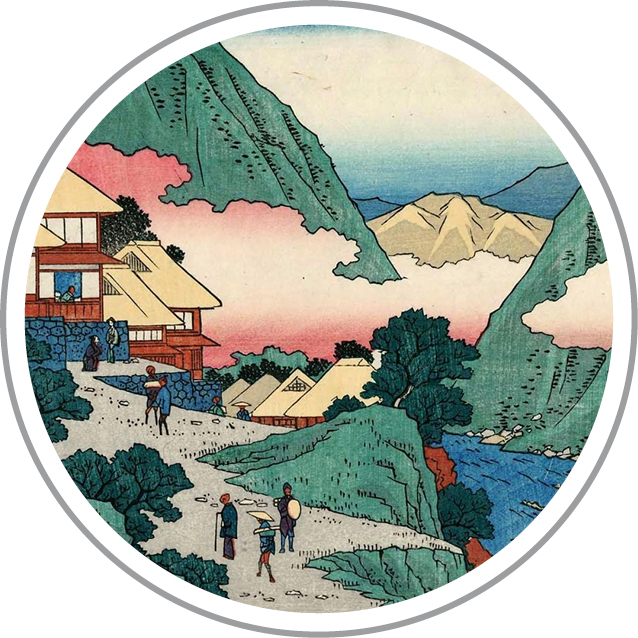木版画
woodblock prints
Pictures of the floating world
Literally meaning “pictures of the floating world”, ukiyo-e (woodblock prints, and also paintings) take their name from the colorful scenes of 17th- to 19th-century Japan that they depict.
Developed as affordable art for the Japanese mass market, ukiyo-e captured the sensory pleasures of everyday life. Favorite subjects included famous geisha, kabuki actors, and sumo wrestlers, as well as renowned townscapes. Picturesque landscape views were also sought after— not least because of the vicarious pleasure they provided in an age when few could travel to see locations themselves. Hugely popular throughout Japan, ukiyo-e were also a big hit abroad, influencing Western art movements such as Impressionism and Art Nouveau and artists such as Manet, Van Gogh, and Toulouse-Lautrec.
The first ukiyo-e prints are believed to have been produced by Hishikawa Moronobu, whose clean drawing style set the standard for artists to follow. The most famous of these is Katsushika Hokusai, whose Great Wave off Kanagawa (part of his Thirty-six Views of Mount Fuji series) has become a globally recognized icon of the genre. Other influential artists include Utagawa Hiroshige, an ukiyo-e master who created over 8,000 works during his lifetime, and Utagawa Kunisada (also known as Utagawa Toyokuni III), famed for his actor prints and one of the most prolific and commercially successful ukiyo-e artists in late 19th century Japan.
Be More Japan woodblock prints
ukiyo-e immersion
Immerse yourself in the floating world with fabulous collections of ukiyo-e at the Japan Ukiyoe Museum in Matsumoto (Nagano Prefecture) and the Ota Memorial Museum of Art in Tokyo. There are museums devoted to Hokusai in Tokyo and Obuse (Nagano Prefecture), and one to Hiroshige in Ena (Gifu Prefecture).

D Hokusai’s The Great Wave off Kanagawa can be viewed at Tokyo’s Sumida Hokusai Museum.
an intricate Process
Printing ukiyo-e is a multilayered process that involves multiple stages and a variety of craftspeople. It begins with the artist, who designs the image and breaks it down into the different colors that will be used. Next comes the woodblock carver, who transfers each separate color image to a series of woodblocks. The printer then uses each of the blocks to make the final complete image, starting with the lightest color and ending with the darkest. Each block has registration marks to help the printer line up the colors.

D The graphic style of ukiyo-e printing is still popular today.
Be More Japan woodblock prints
key ukiyo-e artists |
|||
hishikawa moronobu (1618–94) |
The earliest ukiyo-e master, this prolific artist is best known for his depiction of female beauties. |

|
|
katsushika hokusai (1760–1849) |
As well as his celebrated Thirty-six Views of Mount Fuji series, Hokusai is also known for drawing shunga (erotic images). |

|
|
Utagawa Kunisada (1786–1864) |
Kunisada was hugely popular during his lifetime, with a reputation that surpassed all of his contemporaries. |

|
|
utagawa hiroshige (1797–1858) |
Hiroshige is best known for his landscape series Fifty-three Stations of the Tokaido and One Hundred Famous Views of Edo. |

|
|
